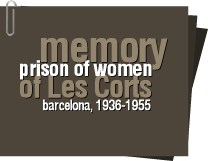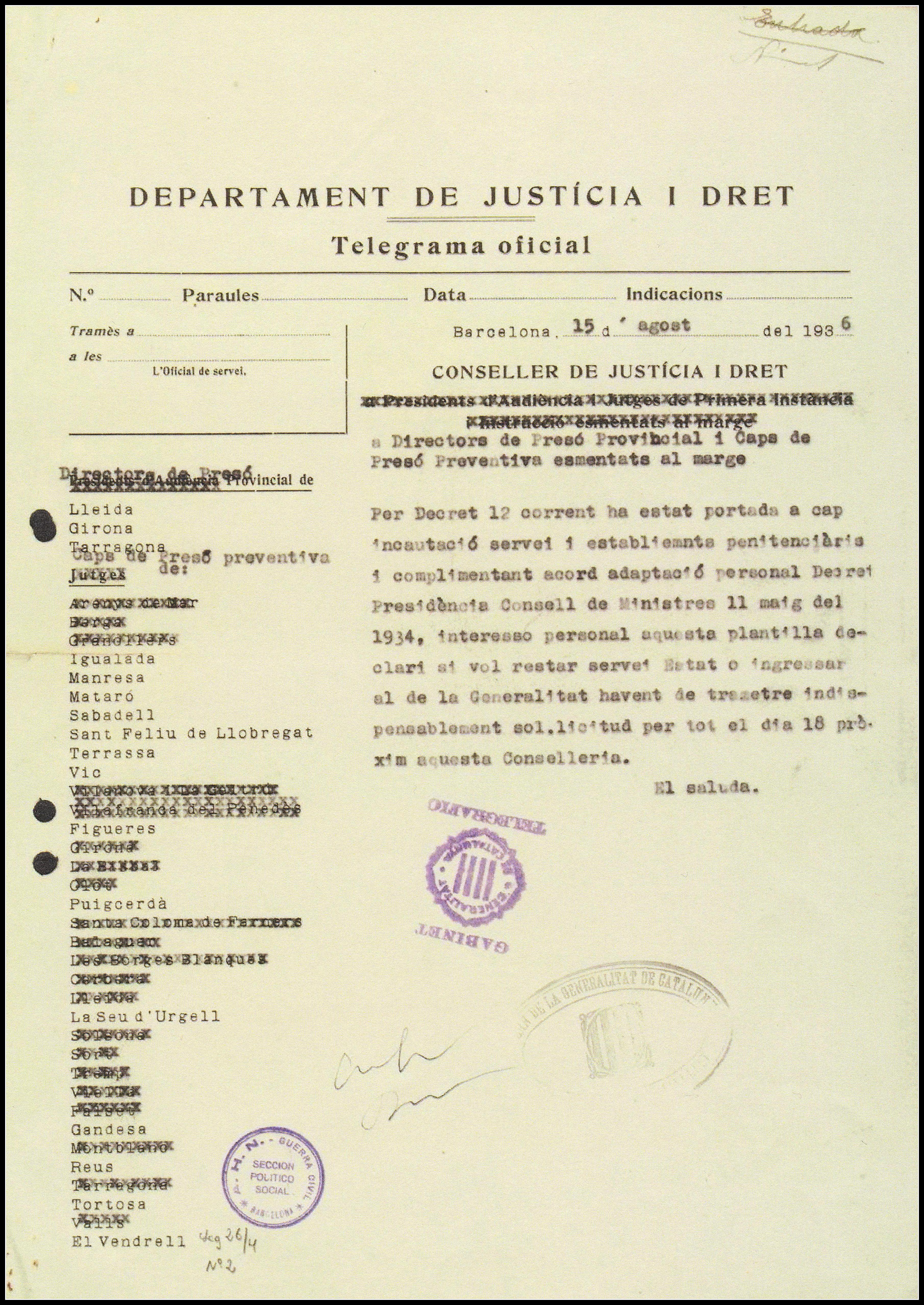The transfer decree (15 May 1934) was finally enforced in August 1936, within a political context of condemnation towards the precedent period, the so called Black Biennium, in line with the ‘new reality brought about by the events of 19 July.
The old Prison Corps was formally abolished, and their members (both male and female) transferred to the new Prisons Committee (Comité de Presons). This was replaced by the Comitè de Serveis Correccionals (Correctional Services Committee) and later by the Direcció General de Serveis Correccionals i de Readaptació (General Directorate of Correctional Services and Readaptation) on 1 August 1937.
An example of this reformist attitude was the opening, on march 12 of 1937, of the ‘Correccional General de Dones’ (General Correctional for Women), an institution created for female prisoners on pre-trial or already convicted by the courts of Catalonia. It was housed at the Asilo del Buen Consejo in Les Corts neighbourhood, after the confiscation of the property of the Dominican Sisters of Charity of the Presentation and advertised as a modernised institution.
Although the premises were far from new, the political spirit behind was imbued an original outlook.One of the last measures taken by Andreu Nin, secretary of the POUM (Workers’ Party of Marxist Unification) in his role as Conseller de Justicia (Justice Minister) of the new Generalitat, was a policy of ‘women only’ with regards to officers of the Catalan Prison Service including (and that was the original point) senior positions (directors, clerical staff and other governing officials).
That is why the staff of the new correctional facility -with the sole exception of the guards outside- was all female, with the POUM member Isabel Peyró i Polo at its head.
Direct sunlight and hygienic conditions, including a spacious garden, were publicised as fine examples of the new spirit of humanisation and rehabilitation policies intended for the prison system. Along the same lines, the prison boasted several pianos and a well organised library service that in mid-1937 featured books such as Gorki’s ‘Mother’, Kropotkin’s The Conquest of Bread, abridged editions of books of Latin and Greek Grammar by Carles Riba, and El Marroc sensual i fanàtic by Aurora Bertrana.
In the following illustrated piece for La Vanguardia newspaper, the pictures taken by photographer Josep Maria Sagarra revealed well-lit rooms and inmates walking among the trees, in stark contrast with the gloomy grand building character of the Presó Vella.
The same overall picture is revealed by the following footage from Laya Films, the Generalitat’s official film company, featuring images of the old and new prisons with others of the prison director and the rest of the officers of the Cos de Serveis Correccionals (Correctional Service Corps). As a curiosity, the report featured a young French spy imprisoned there, Jeannette Georgel, a well-known inmate during those first months of the prison.
Fonts: Decret d'assumpció de competències del 12 d'agost, Diari Oficial de la Generalitat de Catalunya, DOGC 14-8-1936; Ordre del 21 de setembre de supressió de l’antic cos de Presons i pas dels funcionaris i funcionàries al nou Cos de Serveis Correccionals (DOGC 24-9-1936); Ordre del 22 de setembre de 1936 de confiscació de l’Asil del Bon Consell; Ordre de l’ 11 de desembre (DOGC 15-12-36) perquè els establiments correccionals femenins siguin dirigits i atesos per dones, ratificada pel Decret del 10 de novembre de 1937 (DOGC 13-11-1937); ARXIU NACIONAL DE CATALUNYA (ANC), Fons Bosch i Gimpera, 2.10.29, "Llibres adquirits per la biblioteca del correccional" 1937; La Vanguardia, 13-3-1937; FILMOTECA DE CATALUNYA, Laya Films, Nouvelles d’Espagne 4, Barcelona: Espionne! 20 années de prison; TASIS, Rafael (1990): Les presons dels altres. Records d’un escarceller d’ocasió. Barcelona.











